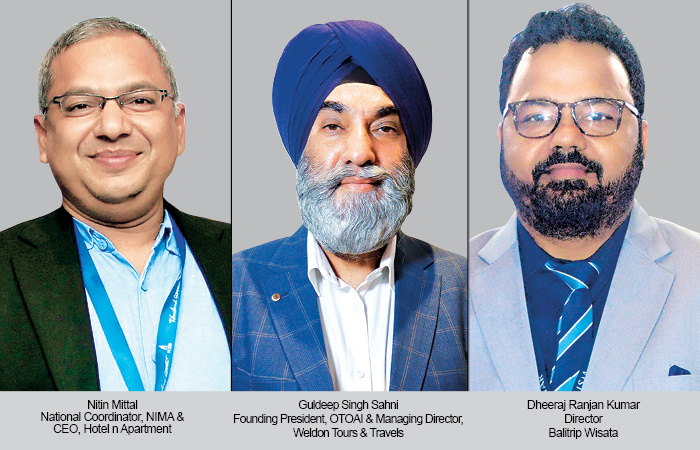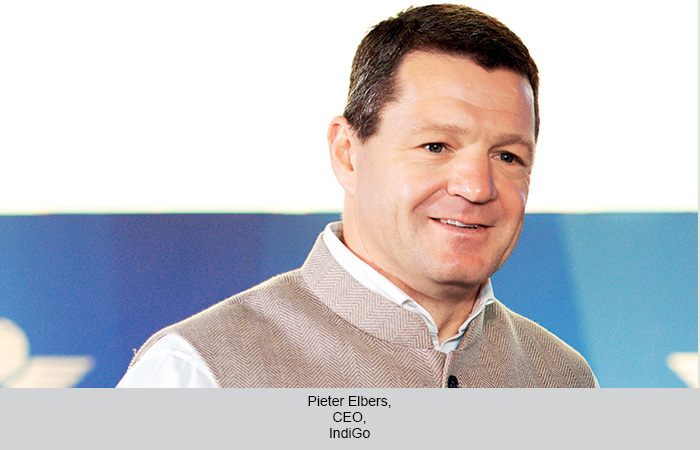Indian hotel industry is likely to witness a decadal-high occupancy of 70-72 per cent in FY2024, says a report by ICRA. The healthy demand uptick results in a pick-up in new supply announcements and commencement of deferred projects over the last 12-15 months.
TT Bureau
ICRA estimates pan-India premium hotel occupancy at 70-72 per cent in FY2024, after recovering to 68-70 per cent in FY2023. Pan-India premium hotel average room rates (ARRs) are expected to be at `6,000-6,200 in FY2024. While the occupancy is expected to be at decadal highs, the RevPAR is expected to remain at a 20-25 per cent discount to the FY2008 peak. Consistent improvement in consumer sentiments despite the inflationary environment, stable corporate performance, and domestic air passenger traffic inching above pre-COVID levels augurs well for travel and hotel demand. The demand recovery has been strong in the last one year, and the agency anticipates it to continue in FY2024 as well. Sustenance of domestic leisure travel, higher bookings from meetings, incentives, conferences, and exhibitions (M!CE), and business travel, along with an increase in foreign tourist arrivals (FTAs), would support demand. The industry is also likely to benefit from specific events like the G20 summit and the ICC World Cup 2023.
Vinutaa S, Vice President and Sector Head – Corporate Ratings, ICRA, said: “Gateway cities like Delhi and Mumbai are likely to top the occupancy chart at 75 per cent+ in FY2024. Demand is expected to remain healthy across markets, although Bengaluru and Pune are likely to be laggards compared to other key cities. While the G20 summit would support occupancy across cities in FY2024, improved economic activity and business associations stemming from these meetings are likely to translate into incremental demand for hotels over the medium term. ICRA expects an improving trend in ARRs as well across markets in FY2024, driven by healthy occupancy. Further, mid-scale hotels have also witnessed traction across cities and are likely to continue reporting healthy ARRs and occupancy in FY2024.”
The agency estimates a 13-15 per cent revenue growth for the Indian hotel industry in FY2024, notwithstanding the potential impact on demand from exogenous shocks, if any. Sustenance of a large part of the cost-rationalisation measures undertaken during the pandemic period, along with operating leverage benefits, resulted in a sharp expansion in margins. The agency’s sample set, comprising 12 large hotel companies, reported operating margins of 32 per cent for FY2023, against 20-22 per cent pre-COVID. While there could be some moderation in margins from these levels with an increase in some cost-heads, including refurbishment/ maintenance, the margins are still expected to be higher than the pre-COVID levels over the medium term. The staff-to-room ratio remains below pre-COVID levels and is expected to continue to be so going forward as well. Accordingly, the agency has a positive business outlook on the Indian hotel industry.
“The healthy demand uptick resulted in a pick-up in new supply announcements and commencement of deferred projects over the last 12-15 months. The incremental premium supply is concentrated in select markets, with Mumbai and Bengaluru accounting for a bulk of the upcoming inventory. There are sizeable supply announcements in tier II and religious destinations as well. However, the hotel supply pipeline is expected to grow only at a three-year CAGR of 3.5-4 per cent, adding approximately 15,000-16,000 rooms to the pan-India premium inventory of 95,000 rooms across 12 key cities in India. This will facilitate an upcycle, as demand improves over the medium term and outpaces supply. The current inventory growth is significantly lower than the expansion of approximately 18 per cent witnessed during FY2009-2013, after the global financial crisis. In terms of trends, rebranding has been prevalent, and a significant part of the pipeline is expected to be through management contracts and operating leases. Also, not many mergers and acquisitions are being witnessed, attributable to demand pick-up, even as ECLGS support for the industry has waned,” Vinutaa reiterated.
Meanwhile, Domestic air passenger traffic for the month of June was estimated at 125.2 lakh, 5 per cent lower than 132.1 lakh in May 2023. However, it witnessed a YoY growth of 19 per cent. Domestic passenger traffic in June 2023 was higher by 4 per cent compared to the pre-COVID levels.
 TravTalk India Online Magazine
TravTalk India Online Magazine







